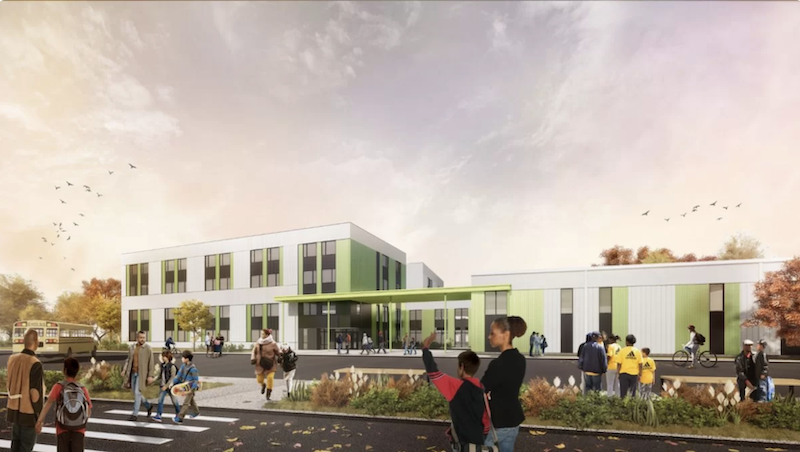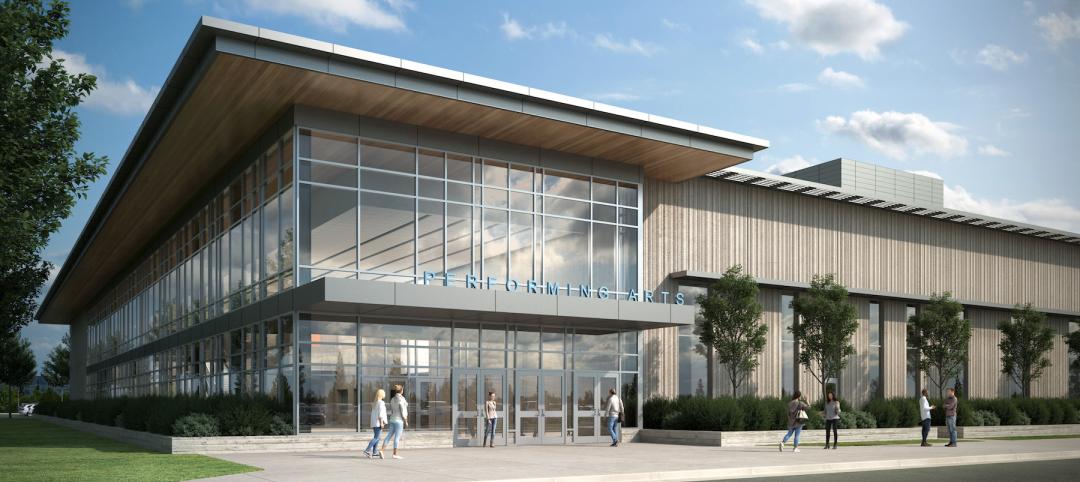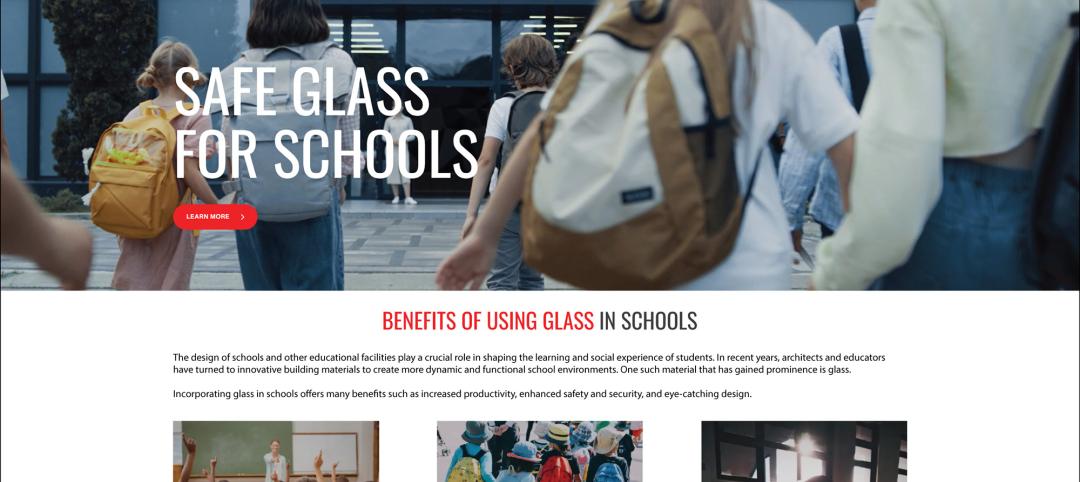Last December, Prince George’s County in Maryland became the first K-12 school district in the nation to partner with the private sector to bundle and finance a six-school delivery program. The public-private consortium included Fengate Capital Management, Gilbane’s development and building companies, designer and architect Stantec, and maintenance services provider Honeywell. JLL was Prince George’s Public School’s financial advisor.
The new schools will be ready for the 2023-24 school year, and add 8,000 new seats across five middle schools and one K-8 school. The school district is expected to save $174 million in deferred maintenance and construction costs.
Financing the construction and renovation of public schools continues to be a major challenge that, in many states, hinges on voters approving bond issues or taxes. For most of America’s 13,000-plus school districts, the private sector is an untapped source for funding.
“At the moment, there is no common definition of a P3 in the U.S., there is no centralized governing body overseeing P3s, and there is an extremely limited breadth of experience in [the] K-12 sector,” states Braisford & Dunlavey, an education planning, development, and management consultant based in Washington, D.C., which has released a free, 40-page guide to K-12 public-private partnerships (P3s).
The guide notes that the National Council of Public-Private Partnerships identifies 18 different legal and financial P3 structures, and each agreement is sui generis to the partnership, or deal. “In K-12, we expect the range of employed structures to be much smaller. Still, each partnership will be unique.”
SEVERAL MOTIVATIONS CITED
The guide cautions that P3s are complex deal structures, and there is no simple pro/con checklist for school districts considering entering into them.
Possible motivations might include accelerating the schedule for delivery of one or more school projects. (That was the primarily factor driving Prince George’s County’s P3.) Reallocating risk and lowering construction costs are two other reasons why P3s might make sense. But school districts must also realize there’s a cost to shifting risk to the private sector in terms of capital lending, legal and development fees, and other compensation.
“P3s aren’t employed for fun,” cautions the guide. “They’re neither simple nor free, and can face a resistant community. If they’re employed, it means there’s a problem that needs solving and it’s best solved with a P3.”
And because K-12 districts typically lack revenue-generating components, the full range of P3s isn’t available to them. “We expect most large-scale projects in K-12 will resemble availability payment agreements/concessionaire agreements, in which the development team designs, builds, finances, operates, and maintains a building that it ‘makes available’ to the district in exchange for availability payments (paid annually, throughout the life of the agreement),” the guide states.
For a P3 to be a viable funding solution, enabling legislation must be in place, the guide states. And for large-scale projects to “pencil out,” the guide recommends that operations and maintenance be key components to most deals.
IS YOUR DISTRICT A GOOD P3 CANDIDATE?
Braisford & Dunlavey states that certain districts fit the profile for considering P3s:
•A large school district facing financially crippling deferred maintenance. “Good news for these projects: Bigger districts tend to have bigger budgets. That can attract developers and other private partners for a large-scale P3. While a smaller project isn’t doomed, it’s less likely.”
•A large school district facing growing enrollment.
•A school district (small or large) with land it can give up, and whose needs it cannot meet on its own. The guide suggests that this type of revenue model is an “easier” P3, but the district still needs to convince the public that this is the best use of the land.
•A school district with a visionary leader who steps up and says, “Enough is enough.” The guide says that projects need champions to navigate approvals, manage stakeholder engagement, and think strategically.
The attributes of any good engagement, according to Braisford & Dunlavey, start with a clear definition of expected outcomes. These pacts also require sufficient time to hash out the deal’s structure and legal details. Stakeholders need to be “true partners” invested in each other’s success, and always honest.
The school district should define the quality of the project’s design and construction, but also be flexible enough to allow its private-sector partners to achieve those parameters.
Related Stories
K-12 Schools | May 15, 2024
A new Alabama high school supports hands-on, collaborative, and diverse learning
In Gulf Shores, a city on Alabama’s Gulf Coast, a new $137 million high school broke ground in late April and is expected to open in the fall of 2026. Designed by DLR Group and Goodwyn Mills Cawood, the 287,000-sf Gulf Shores High School will offer cutting-edge facilities and hands-on learning opportunities.
K-12 Schools | May 13, 2024
S.M.A.R.T. campus combines 3 schools on one site
From the start of the design process for Santa Clara Unified School District’s new preK-12 campus, discussions moved beyond brick-and-mortar to focus on envisioning the future of education in Silicon Valley.
K-12 Schools | May 7, 2024
World's first K-12 school to achieve both LEED for Schools Platinum and WELL Platinum
A new K-12 school in Washington, D.C., is the first school in the world to achieve both LEED for Schools Platinum and WELL Platinum, according to its architect, Perkins Eastman. The John Lewis Elementary School is also the first school in the District of Columbia designed to achieve net-zero energy (NZE).
Biophilic Design | May 6, 2024
The benefits of biophilic design in the built environment
Biophilic design in the built environment supports the health and wellbeing of individuals, as they spend most of their time indoors.
K-12 Schools | Apr 30, 2024
Fully electric Oregon elementary school aims for resilience with microgrid design
The River Grove Elementary School in Oregon was designed for net-zero carbon and resiliency to seismic events, storms, and wildfire. The roughly 82,000-sf school in a Portland suburb will feature a microgrid—a small-scale power grid that operates independently from the area’s electric grid.
K-12 Schools | Apr 29, 2024
Tomorrow's classrooms: Designing schools for the digital age
In a world where technology’s rapid pace has reshaped how we live, work, and communicate, it should be no surprise that it’s also changing the PreK-12 education landscape.
School Construction | Apr 22, 2024
A school district in Utah aggressively moves forward on modernizing its schools
Two new high schools manifest nuanced design differences.
Fire-Rated Products | Apr 16, 2024
SAFTI FIRST launches redesigned website
SAFTI FIRST, leading USA-manufacturer of advanced fire rated glass and framing systems, is pleased to announce the launch of its newly redesigned website, safeglassforschools.com.
K-12 Schools | Apr 11, 2024
Eric Dinges named CEO of PBK
Eric Dinges named CEO of PBK Architects, Houston.
K-12 Schools | Apr 10, 2024
A San Antonio school will provide early childhood education to a traditionally under-resourced region
In San Antonio, Pre-K 4 SA, which provides preschool for 3- and 4-year-olds, and HOLT Group, which owns industrial and other companies, recently broke ground on an early childhood education: the South Education Center.

















